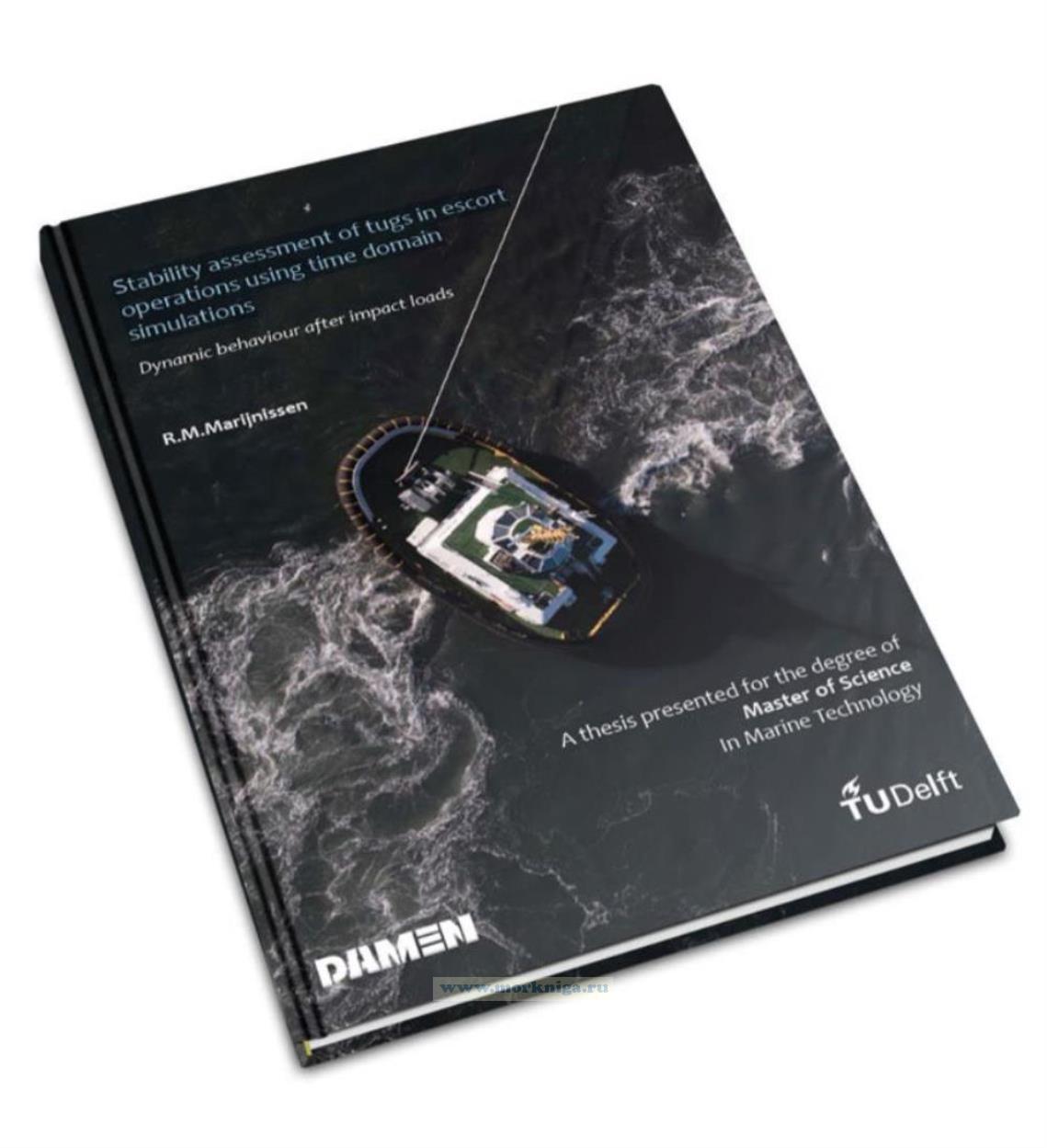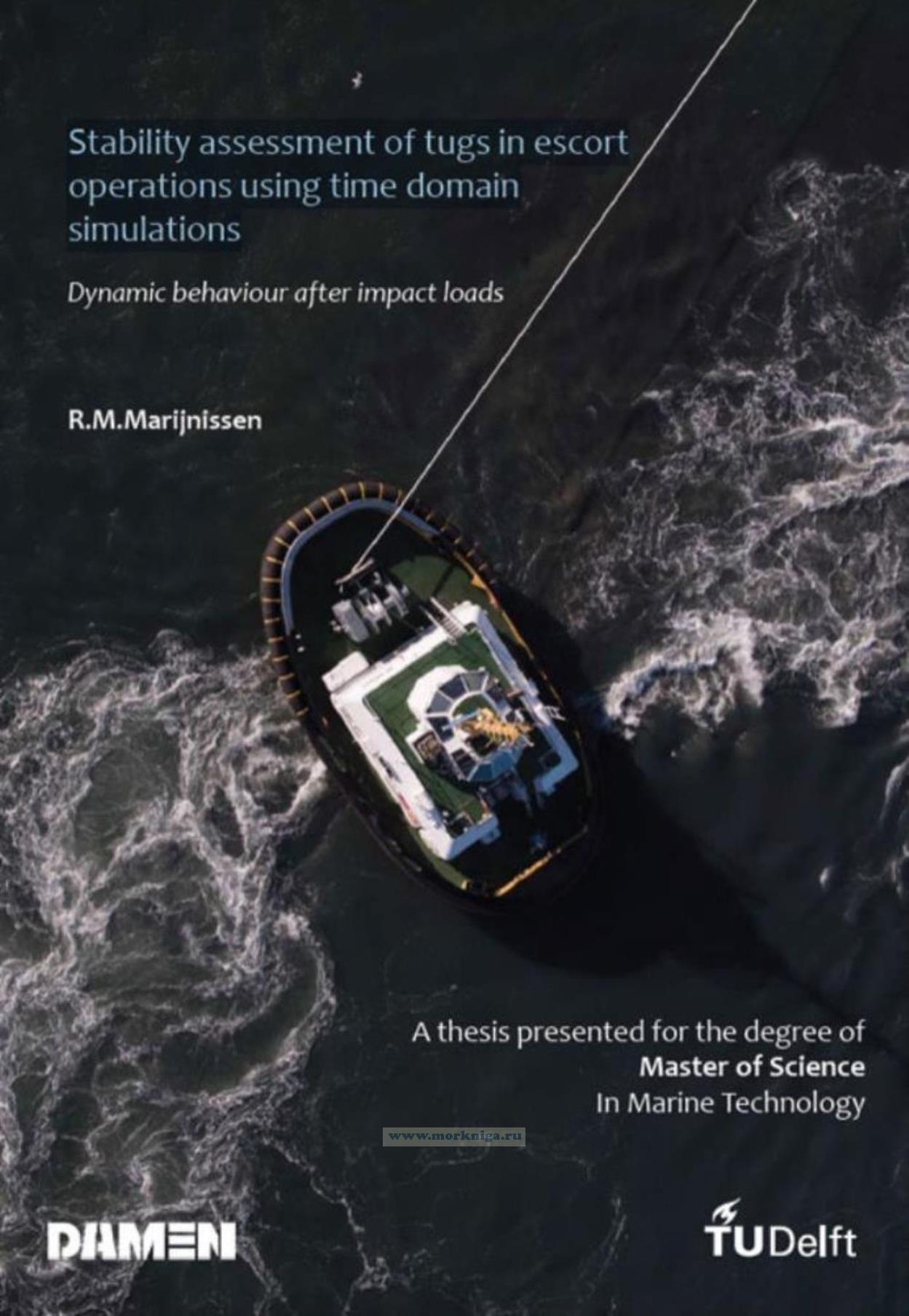Сб с 10 до 16
Stability assessment of tugs in escort operations using time domain simulations/Оценка остойчивости буксиров в операциях сопровождения с использованием моделирования во временной области
Книга на английском языке
In the past decade several high performance tugs were involved in serious accidents. This encouraged the discussion about the current regulation for tugs, which are nowadays equipped with large power installations. Those regulations, set by class societies, distinguish thee types of stability, namely: tow-tripping, self-tripping and escort stability.
Contents
Abstract
Acknowledgement
1 Introduction
1.1 Problem definition
1.2 Research objectives
1.3 State of the art
1.4 Research methodology
1.5 Report outline
2 Literature review
2.1 Rigid body dynamics
2.2 Formulation of hydrodynamic forces
2.3 Methods to derive the hydrodynamic derivatives
2.4 Background of hydrodynamic derivatives
2.5 Roll moment
3 Numerical method
3.1 Velocities and orientation
3.2 Drift angle calculation
3.3 Centripetal and Centrifugal forces
3.4 Steady state forces
3.5 Dynamic forces
3.6 Towline force
3.7 Propulsion force
3.8 Determination of accelerations
3.9 Translation of a 3DOF into a 4DOF system
4 Model Validation
4.1 Validation case - DAMEN RSD 2513
4.2 Validation of hydrodynamic forces
4.3 Free sailing behaviour
4.4 Towing behaviour
4.5 Discussion
5 Sensitivity Analyses
5.1 Dynamic scenarios
5.2 Sensitivity to simulation related parameters
5.3 Design and operation related parameters
6 Case Studies
6.1 Quasi-static safety determination
6.2 Simulation of towline failure
6.3 Simulation of engine failure
6.4 Turning cycle
6.5 Zigzag manoeuvre
6.6 Transition from indirect steering (port) to indirect steering (starboard)
6.7 Overview and discussion
7 Conclusions and recommendations
7.1 Conclusions
7.2 Recommendations
List of Figures
List of Tables
A Dimensionless hydrodynamic derivatives
B Induced drag
C Influence of velocity and trim on validation data
D Data sensitivity analysis
E Time domain simulations of dynamic scenarios
E.1 Towline failure
E.2 Engine failure
E.3 Turning cycle
E.4 Zigzag manoeuvre
F Absolute changes of dynamic behaviour after impact loads

